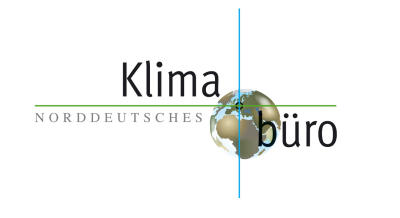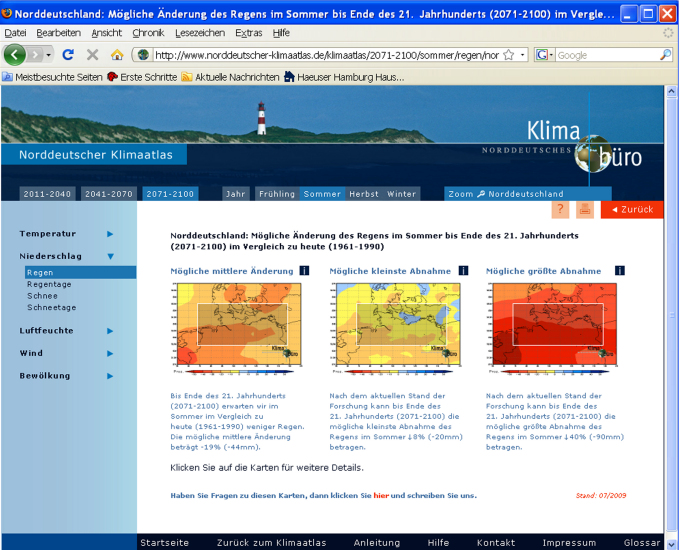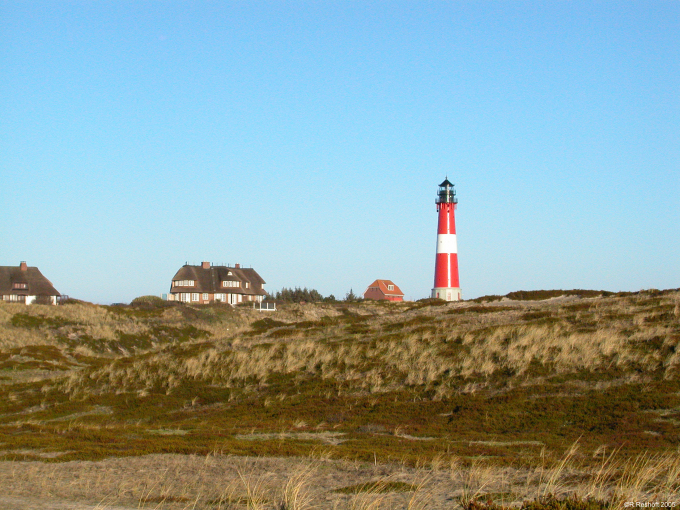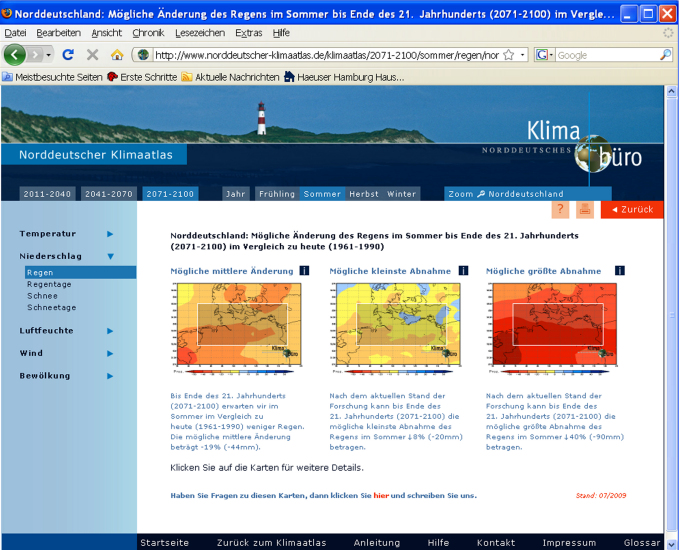Digital North German Climate Atlas now available online
Summer precipitation in northern Germany can decrease by as much as 40 percent
The North German Climate Office of the GKSS-Research Centre in Geesthacht has developed a unique digital Online Atlas for future climate change in northern Germany. Decision makers and interested lay people can now get detailed information about the current state of research on climate change in the region using the internet. One of the numerous results from the Climate Atlas: Summer precipitation in northern Germany could decrease by as much as 40% by the end of the century.
Direct access to knowledge about the climate for northern Germany
Until now, extensive information about climate change in northern German was mostly stored in data bases in the form of raw data. “It’s often a long way from raw data to the correct interpretation of climate data and it was often only accessible to experts. With the North German Climate Atlas we are making knowledge about climate change in our region directly useable,” explains Dr. Insa Meinke, Director of the North German Climate Office.

The North German Climate Atlas is interactive: The user selects parameters such as temperature, wind or precipitation and set the season as well as the time interval to the end of this century. Additionally, four regions can be selected: North Germany, the North Sea coast, the Baltic Sea coast and the metropolitan region of Hamburg.
The desired information is presented in the form of clearly readable chats and brief interpretations.
The North German Climate Atlas considers especially the breadth of possible climate changes. “Since we don’t know today how much greenhouse gas will be emitted in the future, we set various concentrations as the basis of our climate calculations. Every greenhouse gas concentration produces a different climate scenario for the future,” is how Meinke explains the variation in the results.
The summer of the future?

Depending on the concentrations of greenhouse gases, the North German Climate Atlas presents the summer at the end of this century differently:
High concentrations of carbon dioxide and other climate-relevant gases can lead to a decrease in summer precipitation of up to 40%. At the same time, it would be around 5 degrees Celsius warmer in the summer so that we would have to count on 27 additional days of summer (temperatures higher than 25 degrees Celsius). Along with these changes, wind speed in the summer could also decrease by around 12 percent. The dangers of forest fires, droughts and heat stress to people, plants and animals could increase.
In the event of lower concentrations of greenhouse gases, summer precipitation in northern Germany could decrease only by approximately 8 percent by the end of the century. At the same time, it would be on average approximately 2 degrees Celsius warmer and one would have to count on approximately 5 more days of summer. The wind speed would not change significantly in this scenario.
“Regardless of the degree to which we are able to reduce emissions of greenhouse gases, the Climate Atlas makes clear that climate change will continue in northern Germany in any case and will accelerate. We need to initiate suitable measures today in order to prevent the most severe consequences of climate change”, Dr. Insa Meinke emphasizes.
Data basis and background information
The basis of the North German Climate Atlas are all climate calculations available for northern Germany that are completed with numerous regional climate models. These include among other things the regional climate models COSMO-CLM and REMO. Different greenhouse gas concentrations have been entered into each of the regional climate models. The raw data of these climate calculations are primarily stored in the data archive of the German Climate Research Centre (German abbr. DKRZ), but also stored in the data bases of the EU-Projects on Regional Climate Change and in the Archive for Coastal Climates www.coastdat.de at the Institute for Coastal Research of the GKSS-Research Centre in Geesthacht . Until now, 11 different climate calculations have been entered into the Climate Atlas. New climate calculations are continuously being integrated and the North German Climate Atlas is being correspondingly updated.
The North German Climate Office is an Agency of the Institute for Coastal Research at the GKSS-Research Centre in Geesthacht. Here climate information is bundled especially for northern Germany and processed specifically for use by responsible policy makers. The information and consulting services provided is already being used in politics, planning and in economic policy. Inquiries are primarily sent from areas which area already being influenced by the climate today. These include for example protection of coastal areas, energy suppliers and agriculture
The North German Climate Office is part of the Excellence Initiative of CLISAP and the Climate Campus of the University of Hamburg that came from it and partners in the network of regional Helmholtz-Climate Offices of the Helmholtz-Cooperative.
Bildmaterial

Climate change also affects the North German coasts.

